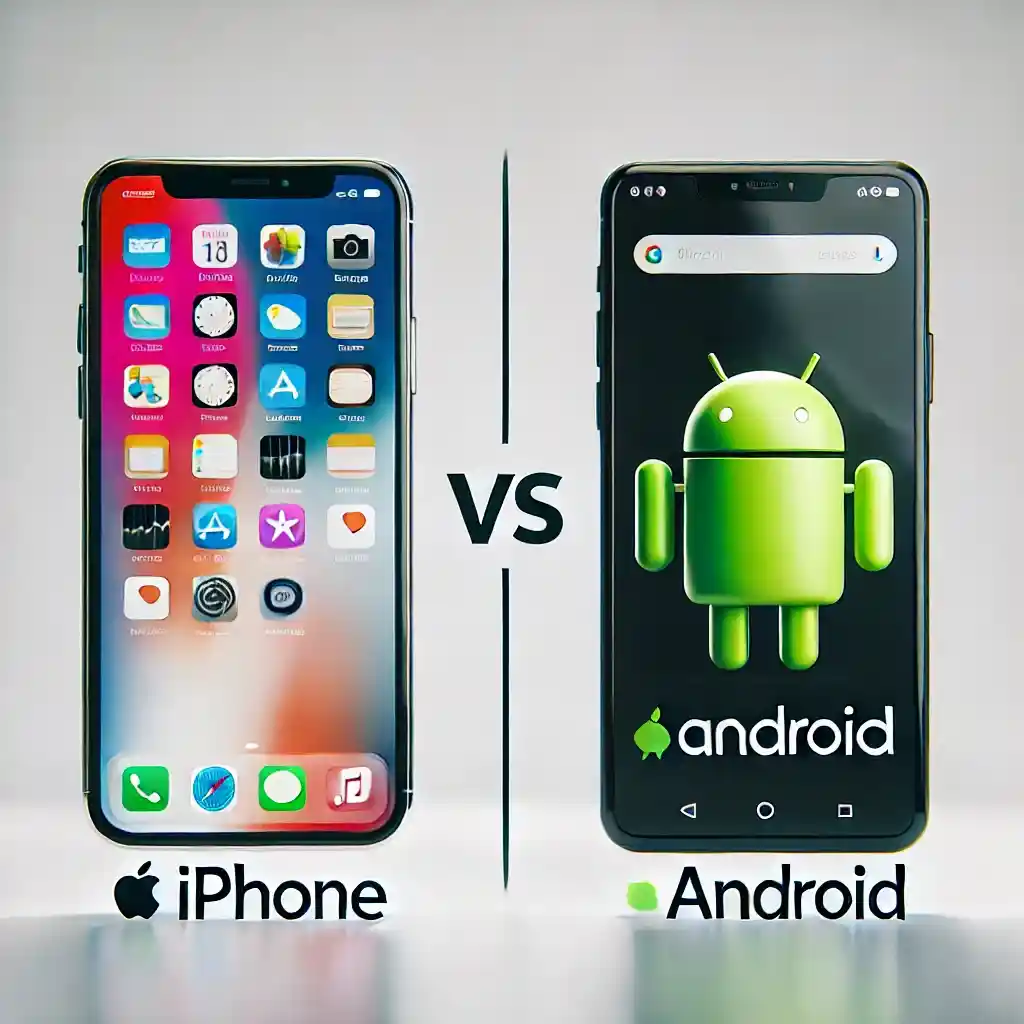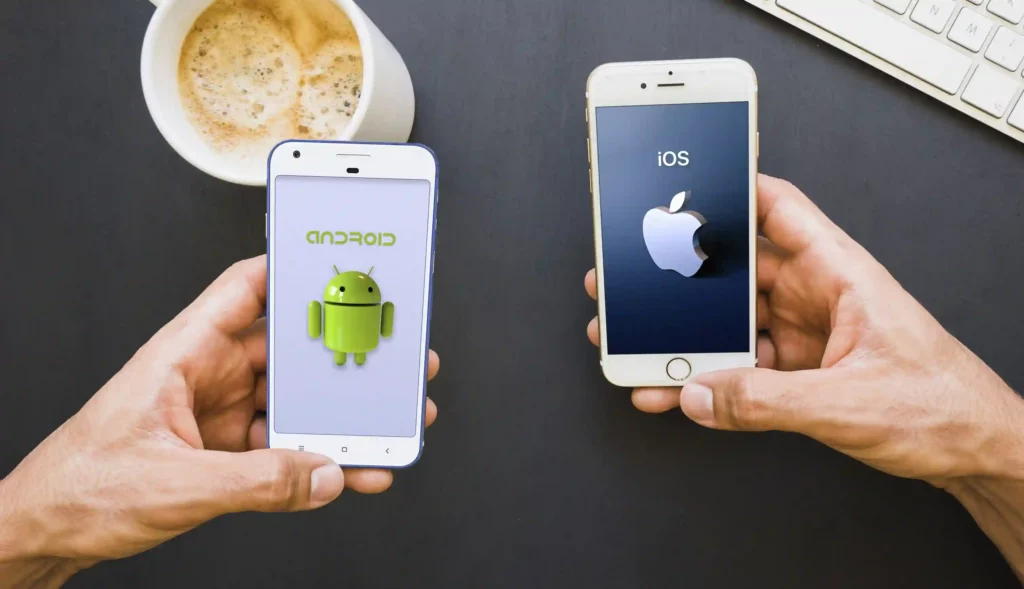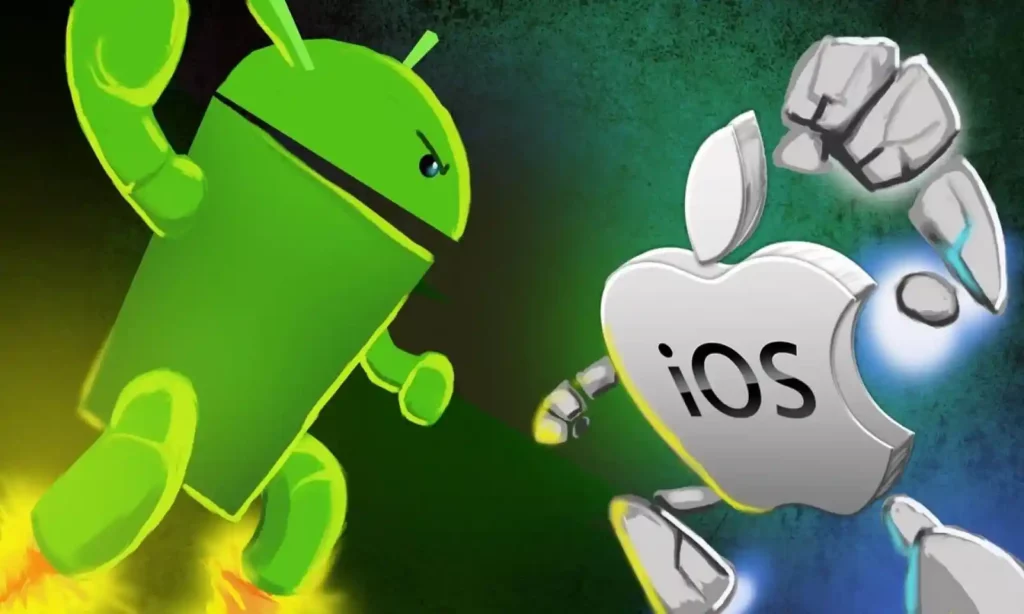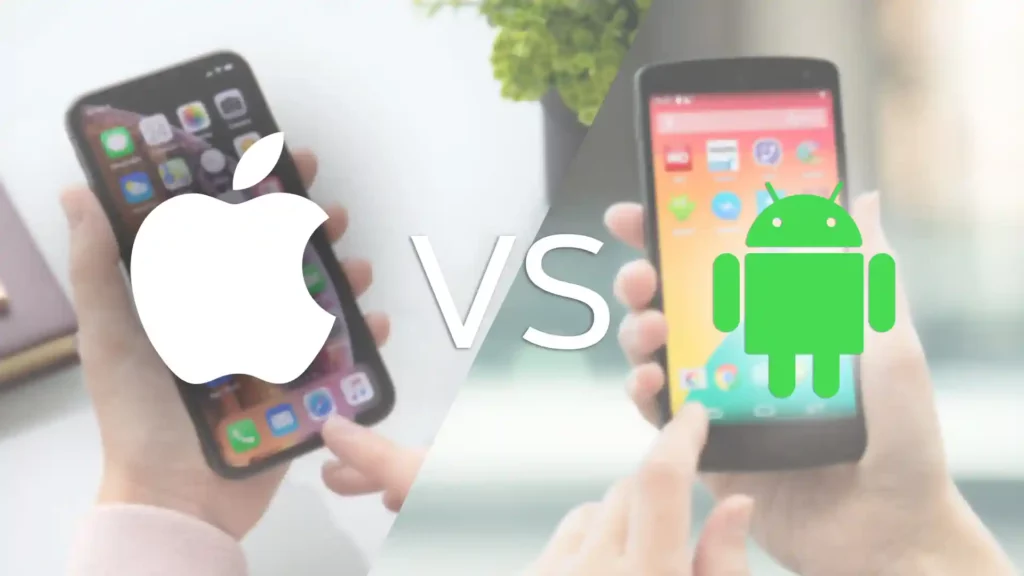The debate between iphone vs android has been one of the longest-running in the tech world. Whether you’re a devoted Apple fan or an avid Android user, the question of which mobile operating system is better continues to spark heated discussions. With each platform offering a unique set of features, advantages, and challenges, choosing between them can be an overwhelming decision.
In this article, we’ll explore the key differences between iPhone (iOS) and Android, providing a detailed comparison that will help you make an informed decision. We’ll look at everything from hardware quality to app ecosystems, customization, updates, performance, and more. By the end of this guide, you’ll have a clearer understanding of which platform is the best fit for your needs.
Operating System Overview
The primary difference between iPhone and Android lies in their operating systems: iOS and Android OS.
- iOS is Apple’s proprietary operating system, found exclusively on iPhones and other Apple devices. It’s known for its closed ecosystem, meaning Apple tightly controls both the hardware and software. This gives iOS a polished, user-friendly experience with a seamless integration of apps and hardware.
- Android, developed by Google, is an open-source platform, meaning it’s used by a wide variety of manufacturers like Samsung, Google, OnePlus, and others. Android offers more flexibility and customization options but can result in a more fragmented user experience, depending on the manufacturer.
Hardware and Design
When comparing hardware, Apple’s iPhone tends to be more streamlined and consistent, while Android offers a variety of designs from multiple manufacturers.

iPhone Hardware
- Apple iPhones are known for their premium build quality, sleek aesthetics, and consistency. The materials used are of high quality (such as aluminum and glass), and Apple tends to follow a minimalist approach when it comes to design.
- Battery life and performance optimization are tightly controlled by Apple, ensuring that the device performs well even as it ages.
Android Hardware
- Android phones come in a wide variety of shapes, sizes, and price ranges. Manufacturers such as Samsung, Google, OnePlus, and Xiaomi produce devices with different features, designs, and build materials. For example, some Android phones offer foldable screens, super-fast charging, or high-refresh-rate displays that iPhones don’t offer.
- Customizability is one of Android’s major strengths. Users can often swap out battery packs, add microSD cards for extra storage, and use a variety of accessories that may not be available for iPhones.
Verdict: If you prefer consistency and premium design, iPhone stands out. However, if you enjoy a wide range of choices, hardware features, and more flexibility, Android wins.
Software and Customization
One of the most defining differences between iPhone and Android is the level of customization each platform offers.

iPhone (iOS) Customization
- iOS has always been more restricted when it comes to customization. While you can change your wallpaper and arrange apps in folders, the system doesn’t allow much freedom. The operating system is designed to maintain a uniform user experience, prioritizing ease of use.
- App icons can now be customized with iOS 14 and later, but the customization options are still limited compared to Android.
Android Customization
- Android, on the other hand, offers a wealth of customization options. From changing home screens, to using widgets, to adjusting the theme, Android allows users to personalize the experience down to the smallest detail.
- Custom ROMs (modified versions of Android) are another area where Android stands out. Tech-savvy users can replace the default Android system with different versions, giving them a completely unique experience.
Verdict: If customization is a priority, Android wins hands down.
Performance and Speed
Both iPhones and Android phones have evolved in terms of performance, but they differ in their approach.

iPhone Performance
- Apple’s iPhones are powered by their custom-designed A-series chips. These chips are designed specifically for iOS, making them highly efficient. As a result, iPhones tend to perform smoothly and efficiently, even when running heavy apps or multitasking. The tight integration between hardware and software ensures fast performance and good optimization.
- App optimization is also a major strength of the iPhone. Because Apple controls both hardware and software, developers can more easily optimize their apps for iPhones.
Android Performance
- Android phones run on chips made by Qualcomm (Snapdragon), Samsung (Exynos), and MediaTek. Some Android phones, like the Google Pixel or OnePlus, come with high-performance processors, offering top-tier speed and multitasking capabilities.
- Performance on Android can vary significantly depending on the manufacturer. High-end Android devices can match or even exceed iPhone performance, but lower-end Android phones can struggle with processing speeds and optimization.
Verdict: iPhone leads in terms of optimization and overall fluidity, but high-end Android phones (like the Samsung Galaxy S series or Google Pixel) can offer comparable performance.
| Category | iPhone (iOS) | Android |
|---|---|---|
| Operating System | iOS (Closed Ecosystem) | Android (Open Source) |
| Customization | Limited customization options | Highly customizable (UI, ROMs, widgets) |
| Hardware Variety | Limited to Apple devices (iPhone, iPad, etc.) | Wide range from various manufacturers (Samsung, OnePlus, etc.) |
| Performance | Optimized hardware & software integration | Varies by manufacturer, generally good on premium devices |
| App Quality | Highly curated, strict App Store policies | Varied app quality; more freedom but risks of malware |
| Battery Life | Great battery optimization | Excellent in premium models, fast charging options |
| Updates | Regular, long-term support (5+ years) | Varies; quicker on Google Pixel, slower on others |
| App Store/Marketplace | Apple App Store (highly regulated) | Google Play Store (more freedom, less regulation) |
| Customization of UI | Limited (Icons, Wallpapers) | Highly customizable (Home screen, icons, themes, widgets) |
| Security | Strong security with frequent updates | Security varies, often slower updates; more risks |
| Price Range | Premium pricing (high-end devices) | Wide range from budget to flagship models |
| Integration with Other Devices | Seamless integration with Apple ecosystem (Mac, iPad, Apple Watch) | Less seamless, varies by device and manufacturer |
App Ecosystem
One of the most significant factors in choosing between iPhone and Android is the app ecosystem.
iPhone App Ecosystem
- App Store: The Apple App Store is known for its curated and strictly regulated apps, meaning you’re less likely to encounter low-quality or malicious apps. Developers often prioritize iOS for their first launch, so iPhone users often get access to apps and updates earlier.
- App Quality: iOS apps are generally more polished and offer a premium experience. This is often due to Apple’s strict guidelines for developers.
Android App Ecosystem
- Google Play Store: While Google’s Play Store has a wider selection of apps, it’s also more lenient when it comes to app quality and security. As a result, users may encounter some low-quality apps, though Google has been working to improve security with additional protections.
- Third-Party Apps: Android allows users to sideload apps from third-party sources, offering more freedom when it comes to app selection.
Verdict: If you prefer a more curated and secure app experience, iPhone is the way to go. However, Android offers greater freedom and access to a broader range of apps.
Battery Life and Charging
Battery life is a crucial aspect of any smartphone, and both platforms have their strengths and weaknesses.

iPhone Battery Life
- Apple has significantly improved battery life in recent iPhone models, with software optimization and battery management tools helping extend usage time.
- Apple uses Lightning ports for charging, though it has begun transitioning to USB-C in some devices. MagSafe charging is also available for the iPhone, making wireless charging faster and more convenient.
Android Battery Life
- Android devices vary significantly in terms of battery life. Premium models like the Samsung Galaxy or OnePlus tend to have great battery life, and many Android phones now support fast charging and wireless charging.
- USB-C charging is universal on Android, which is a significant advantage, as you don’t have to deal with proprietary charging cables.
Verdict: iPhones offer good battery optimization, while Android offers better flexibility and faster charging options on premium devices.
Updates and Security
Keeping your device secure and up to date is essential in today’s digital age.
iPhone Updates
- Apple’s iOS updates are rolled out simultaneously to all supported iPhones, ensuring that all users have access to the latest security patches and features. iPhones are generally supported for 5+ years, which is impressive compared to many Android devices.
Android Updates
- Android updates are handled differently. While Google Pixel devices get quick updates directly from Google, other manufacturers may be slower to roll out updates. Android phones tend to have less longevity in terms of software support, with updates typically lasting 2-3 years on most devices.
Verdict: iPhones win when it comes to consistent updates and security over the long term.
Pros and Cons
iPhone Pros
- Sleek design and premium build quality
- Consistent updates and long-term support
- App quality and security
- Seamless integration with other Apple devices (Mac, Apple Watch, etc.)
- Simple, user-friendly interface
iPhone Cons
- No customization options for UI
- Expensive compared to most Android devices
- Limited hardware variety
Android Pros
- Wide variety of devices across different price points
- Highly customizable UI and features
- Expandable storage options
- More freedom with app installations and file management
Android Cons
- Inconsistent software updates
- Fragmented hardware experience
- App quality can vary significantly
FAQ Section
1. Which is better for gaming: iPhone or Android?
Both platforms are great for gaming, but Android offers more flexibility with high-refresh-rate displays and customizable hardware, making it a strong choice for mobile gaming. iPhones, however, tend to offer more optimized apps for a smooth experience.
2. Which phone is cheaper, iPhone or Android?
Android offers a wider range of devices, including budget-friendly options. iPhones, on the other hand, are generally more expensive, with fewer models to choose from.
3. Does Android have better battery life than iPhone?
It depends on the device, but generally, Android phones offer more battery size options and fast charging capabilities. iPhones, however, have great battery optimization to ensure long-lasting performance.
4. Can I customize my iPhone like Android?
No, iOS is much more restrictive in terms of customization compared to Android. You can change wallpapers and icons, but the level of customization is limited.
5. Are iPhones more secure than Androids?
Yes, iPhones tend to have more stringent security measures and frequent updates, ensuring that your device stays secure. Android is more susceptible to security risks, mainly due to the variety of devices and manufacturers.
Conclusion
Ultimately, the choice between iPhone vs. Android comes down to personal preference. iPhones provide a premium, secure, and streamlined experience with consistent updates and app quality. Android, on the other hand, offers greater customization, flexibility, and a wider range of devices to choose from, especially if you value hardware variety.
Whichever you choose, both platforms have evolved to meet the demands of modern users, offering high-end features that make them both excellent choices in 2025.
Find More: Blogify Zone



